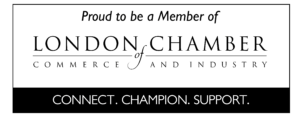You don’t need a logo (yet)!
You will need one – it’s just not the right place to start.
First, you need a brand strategy. Without it you’re simply making things up and hoping they work!
According to a recent survey conducted by Barclays, 47% of small business owners have no formal strategy in place to support their business growth. Of those, 23% have no plan whatsoever whilst 25% only have an informal, verbal business plan.
A proper brand strategy covers the same ground as a business plan – but usually fills in a few additional parts of your business puzzle.
A well-constructed brand strategy will identify your target audience(s), plan your route(s) to market, and establish the most effective messaging and price point. It will identify how you fit into the competitive landscape, your brand story and how all of these come together to build a brand that resonates most effectively with your ideal customers.
And only then are you really in a position to have a logo designed. Some companies do create their logo first – but they are in real danger of choosing a logo design that does not work well for the brand and does not attract the very customers you are trying to serve.
The best brand strategy acts like a bridge. Bridges are usually built from foundations firmly planted on both banks. The company bank needs to authentically represent your business, your values and your objectives.
The customer side needs to be rooted in who your ideal audience is. Addressing their needs and reflecting who they are. Your brand strategy, encompassing the company culture, your customer touch-points, your tone of voice, the marketing plan, your visual identity, your brand colours, and your logo should all be created to establish a solid connection between those two different banks – the bridge.
A good brand differentiates you from your competition and attracts the right customers to you.
Yes, you do need a logo. A logo is the face of the brand. A badge that should represent everything the company stand for.
Seeing a company’s logo should make us think of all the underpinning aspects that contribute to your understanding of that brand.
Brands stand for something in the minds of their customers. They occupy a specific place in our minds and their associated logo triggers a whole set of mental associations we have with the brand as a whole. Fed by every interaction and touch point – which is why a brand strategy is essential.
People do try to retroengineer those associations … but it’s far from an ideal process and is a lot more problematic than doing things in the correct order. It’s a bit like putting a clapped-out, old engine into a new car … the performance and driving experience will not match up to the expectations that the shiny exterior implies. If it’s your first time driving that make of car you’d be unlikely to ever want to get behind the wheel of another one ever again. The customer relationship is burnt before it’s even begun.
However, designing a logo from scratch – that is specifically created to best represent your company, to differentiate you within your market whilst also embodying the key concepts of your brand positioning, is going to generate a better logo that better fits your company and your brand objectives as a whole.
For start-ups the advice is often to do something – just get it out to the market and iterate as needed. Action being preferable to ‘perfection stagnation’. And I get that. But when referring to your branding and logo then the impact of getting it wrong has to be factored in. The damage of a bad logo and an ill-conceived brand can have far-reaching and very impactive results. If the logo is wrong for the market and your brand does not connect with your audience, then you are unlike to have a business long enough to be able to iterate and develop later.
A recent survey found that approx 20% of new businesses failed in their first year, rising to 60% in the first 3 years.
Another survey, by CBinsight, looked into this a little deeper and found that:
- 42% of startup businesses fail because there’s no market need for their services or products.
- 29% failed because they ran out of cash.
- 23% failed because they didn’t have the right team running the business.
- 19% were outcompeted.
- 18% failed because of pricing and cost issues.
- 17% failed because of a poor product offering.
- 17% failed because they lacked a business model.
- 14% failed because of poor marketing.
- 14% failed because they ignored their customers.
Issues that could all largely be anticipated and avoided if an effective brand strategy and positioning exercise had been undertaken.
Moreover, if a company attracts the wrong customer fit then that results in a mismatch in the customer’s expectations and the reality of their experience. Which can be very detrimental to a new company. Bad customer experiences are very hard to turn around. There are rarely second chances for new businesses.
We all know first impressions count. In terms of branding, the first impression and the first experience need to match up and align. You need to deliver on the promise your brand makes.
Any logo that does not reflect the company is a bit like a Tinder profile picture that is 20 years old or photoshopped beyond recognition. No one likes to feel they’ve been lied to and companies should not be happy to be misrepresented.
Yes, you do need a logo. So invest the time and resources to make sure it does what it needs to do and is the best it can be. It will pay dividends, in the long run, to get it right at the start.
Your logo is the face of your brand – make sure it’s the best face it can be








Leave a Reply
Want to join the discussion?Feel free to contribute!